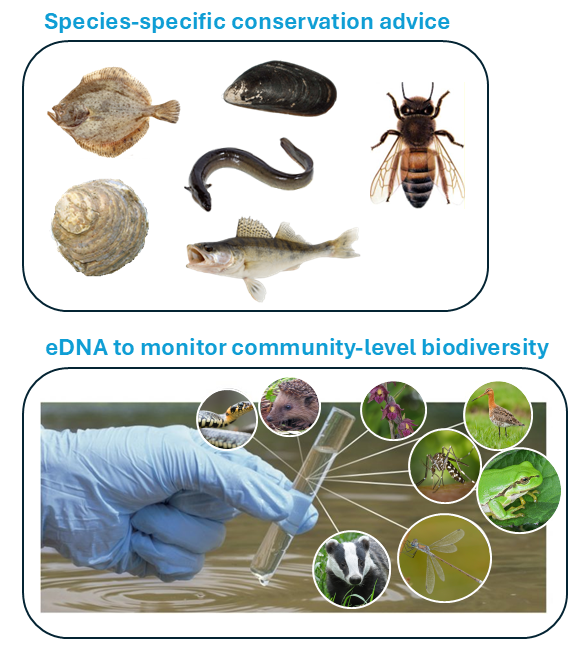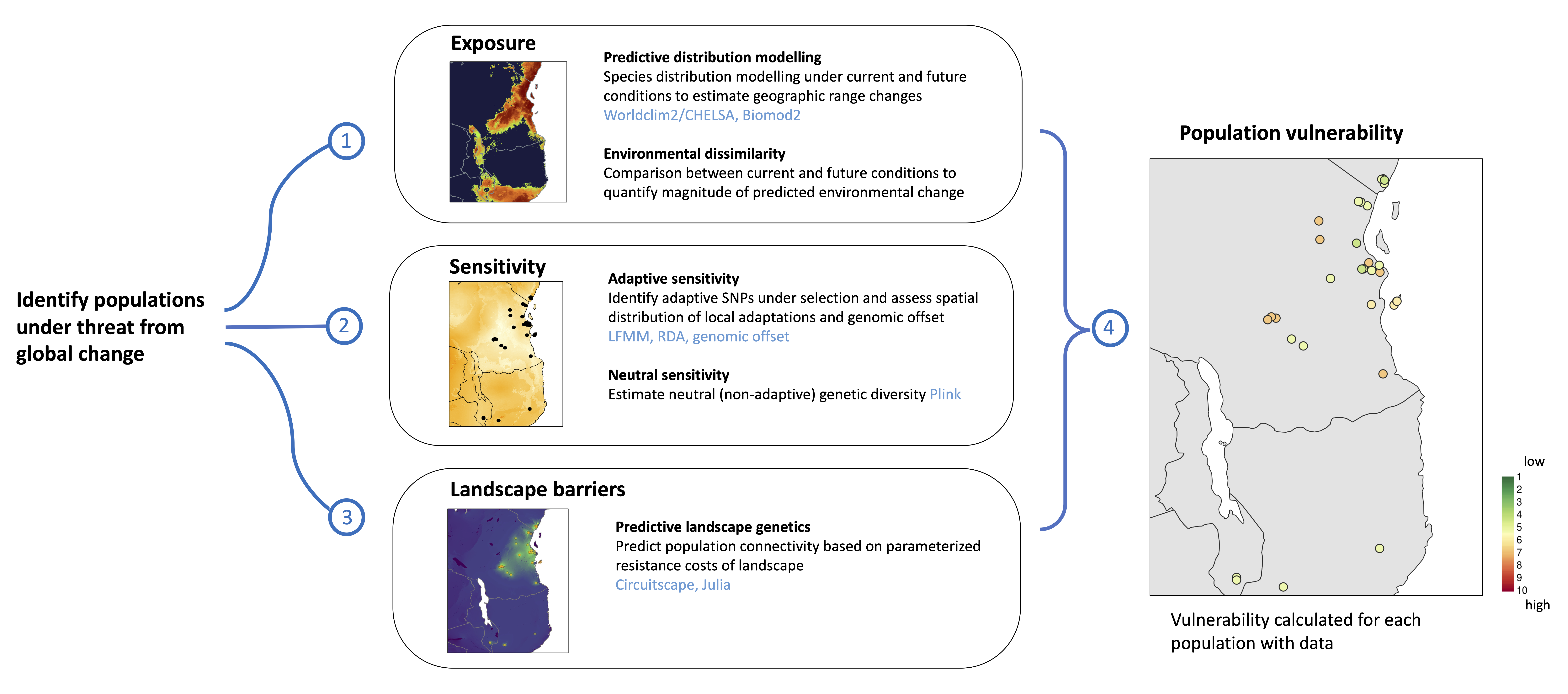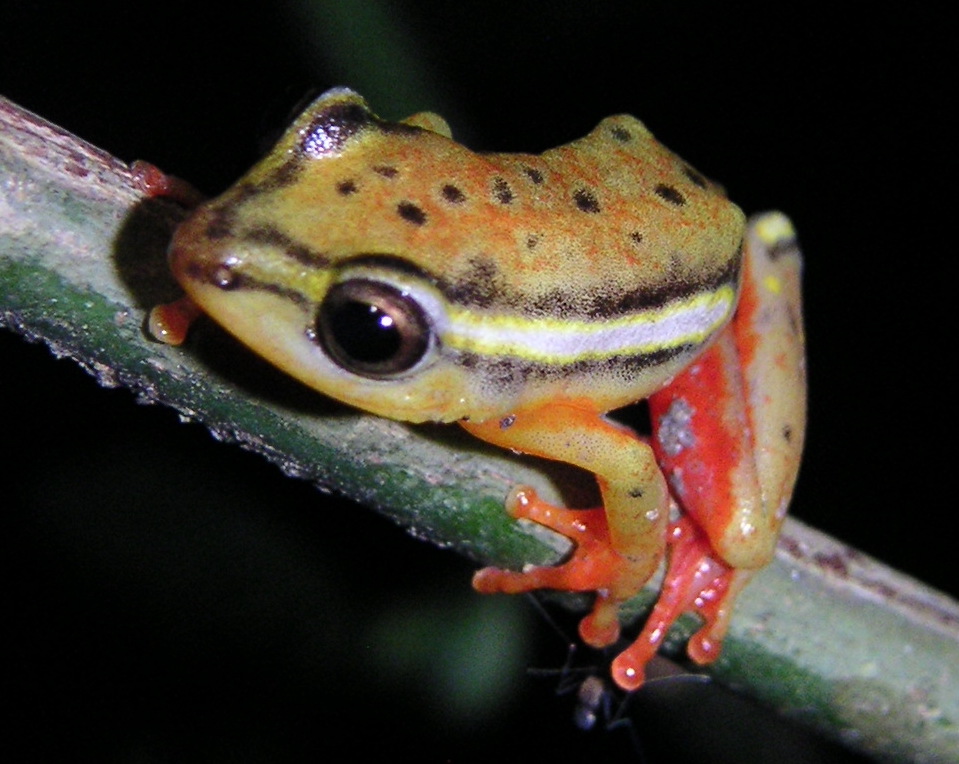Research projects (as main PI)
Wageningen University and Research projects (2024-)
The below three projects are my current main topics within the Centre for Genetic Resources and Animal Breeding and Genomics group. See the below links for some news about their progress:


Life on the edge
Global change threatens biodiversity, with many species unable to respond fast enough to changing conditions due to rapid climate change and anthropogenic impacts. Population declines are our early warning signals for larger scale declines in species, so assessing the adaptive capacity of populations within species and quantifying their vulnerability under future global change remains a priority for biodiversity research. This is the focus of my recently funded and now completed project, “Life on the edge: A new informatic toolbox to conserve wildlife populations under threat from global change”, for which I obtained a 3 year grant from sDiv, the synthesis centre of iDiv (German Centre for Integrative Biodiversity Research). In this project I integrated ecological (traits, species distribution models), environmental (climate change forecasts, landscape connectivity) and genome-wide molecular data (neutral and adaptive diversity) for populations across multiple species in a novel, automated and extendable climate change vulnerability assessment framework. Collaborators: Orly Razgour (University of Exeter, UK), Brenna Forester (US Fish and Wildlife Service), Renske Onstein (iDiv, Leipzig, Germany), Malin Pinsky (Rutgers University, USA), Hjalmar Kühl, (MPI-EVA and iDiv, Leipzig, Germany), Sebastian Steinfartz, (University of Leipzig, Germany). Here is a recent talk at the European Reference Genome Atlas seminar series about Life on the edge. There are some new developments coming soon for Life on the edge so keep a lookout here for more news!

Cryptic genetic diversity under climate change
Recently published in Evolutionary Applications here is our a follow up from Bwong et al. 2020 focused on the East African reedfrogs Hyperolius mitchelli and H. rubrovermiculatus. In this work we generated a new genome-wide dataset to combine genetic diversity and local adaptation estimates with climate change forecasts and species distribution models, with the goal of aiding conservation management efforts. Collaborators: John V. Lyakurwa (University of Dar es Salaam, Tanzania), Beryl Bwong (National Museums of Kenya), Lucinda P. Lawson (University of Cincinnati), Hendrik Müller (University of Halle, Germany), Robert Jehle (University of Salford, UK), Simon Loader (National History Museum, London, UK), Sebastian Steinfartz (University of Leipzig, Germany)
Recently published side projects (in the last ~6 years)
- The compilation of an amphibian checklist for Shimba Hills National Reserve, Kenya link
- Large-scale collaborative efforts on African amphibian evolution/biogeographical studies link, link, link, link
- The effects of missing data on phylogenetic inference using short read high-throughput (RAD-seq) data link
- How environmental variability in chimpanzee habitats has a positive influence on behavioural diversity link
- Recent connectivity between chimpanzee populations and subspecies across Africa link
- The relationship between fruit colour and trichromatic colour vision in primates link
- A review on existing approaches in macroevolution and macroecology and their potential contribution to conservation link
- Evolutionary ecology of the mangrove species Lumnitzera across its range and the role of connectivity and isolation in phylogeographic patterns link
- Fragmentation effects on Malagasy small mammals link
- The genomic consequences of megafaunal frugivore extinctions on the palms of Madagascar link
- Micro- and macro-evolutionary dynamics of seasonally dry neotropical forests link
- Conservation genomics of Alytes obstetricans at its European range limits link